
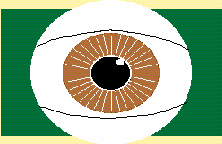
GLAUCOMA
GLAUCOMA IS THE LEADING CAUSE OF BLINDNESS IN THE UNITED STATES... THERE IS NO CURE FOR GLAUCOMA... BUT IT IS TREATABLE IF DETECTED EARLY.



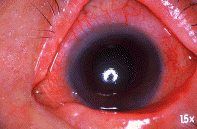 Glaucoma is an injury to the optic nerve related to an elevated pressure inside the eye. Some patients may have sustained high intra-ocular pressure and do not develop optic nerve damage; this type of patients have acquired ocular hypertension. Another type of patients have what is called low tension glaucoma (normal tension glaucoma); these patients progressively lose their vision and become blind without developing high eye pressures. Several parameters are evaluated to diagnose glaucoma; some of them are: peripheral vision, visual contrast sensitivity, optic nerve cupping and gonioscopy. Gonioscopy is visualizing the anatomy of the filtering angle of the eye. To further understand this disease, these are some informational Facts about glaucoma . Glaucoma can also be mistaken with other eye problems related to elevated intraocular pressure. In order to prevent misunderstandings this is a report about glaucoma.
Glaucoma is an injury to the optic nerve related to an elevated pressure inside the eye. Some patients may have sustained high intra-ocular pressure and do not develop optic nerve damage; this type of patients have acquired ocular hypertension. Another type of patients have what is called low tension glaucoma (normal tension glaucoma); these patients progressively lose their vision and become blind without developing high eye pressures. Several parameters are evaluated to diagnose glaucoma; some of them are: peripheral vision, visual contrast sensitivity, optic nerve cupping and gonioscopy. Gonioscopy is visualizing the anatomy of the filtering angle of the eye. To further understand this disease, these are some informational Facts about glaucoma . Glaucoma can also be mistaken with other eye problems related to elevated intraocular pressure. In order to prevent misunderstandings this is a report about glaucoma.
This is an internal view of the eye that shows the optic nerve on the back of the eye:
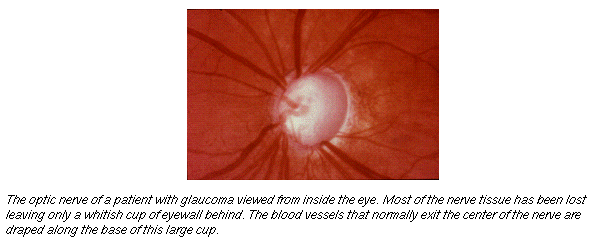
The American Academy of Ophthalmology has prepared an anatomical diagram of the eye that shows the location of the optic nerve in relation to the rest of the eye.
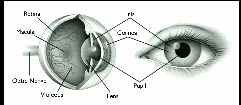
To see high fluid pressure that causes damage to the optic nerves, click the picture below:
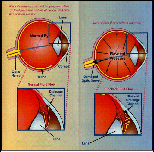
For more information about the anatomy and physiology of the eye read this brief report on The Eye and the Way it Works .

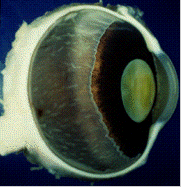 The most common type of glaucoma is the one called primary open angle glaucoma. This type of glaucoma is usually painless and most patients are not aware they suffer from it unless a thorough eye examination takes place. The priamry open angle glaucoma produces loss of vision in very gradual steps over the years. A more acute form of glaucoma is the narrow angle glaucoma. It involves sudden severe pain, blurred vision, high intraocular pressure and gradual loss of peripheral vision.
The most common type of glaucoma is the one called primary open angle glaucoma. This type of glaucoma is usually painless and most patients are not aware they suffer from it unless a thorough eye examination takes place. The priamry open angle glaucoma produces loss of vision in very gradual steps over the years. A more acute form of glaucoma is the narrow angle glaucoma. It involves sudden severe pain, blurred vision, high intraocular pressure and gradual loss of peripheral vision.
There are several other types of glaucoma than the mentioned above. Some other types are
For more information about the different types of glaucoma see this document that explains with more details the Classification of glaucomas . Primary open-angle glaucoma is one of the most common types of glaucoma; read this report on Primary open-angle glaucoma to learn more about it.

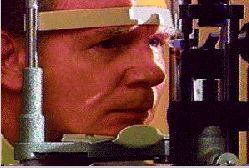
For more information about these techniques read this report about Diagnosis of Glaucoma.
You can take this test prepared by the American Association of Ophthalmology to determine if you are at risk of getting glaucoma.


 There are several medications available to treat glaucoma. They can be classified as: miotics,epinephrine, beta-blockers,carbonic anhydrase inhibitors, alpha agonists and prostaglandin analogues.To learn more about them see this description of the Glaucoma medications . Medications for glaucoma may unfortunately produce annoying side-effects . These side-effects are classified according to the medications they are related to.
There are several medications available to treat glaucoma. They can be classified as: miotics,epinephrine, beta-blockers,carbonic anhydrase inhibitors, alpha agonists and prostaglandin analogues.To learn more about them see this description of the Glaucoma medications . Medications for glaucoma may unfortunately produce annoying side-effects . These side-effects are classified according to the medications they are related to.
This is another report about the Treatment of Glaucoma . Recent advances in technology have introduced a new treatment for glaucoma. Laser surgery can now be used to treat not only glaucoma but other eye diseases.

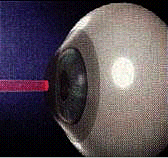 Research about glaucoma has been active in recent years not only in the United States. The Glaucoma Research Foundation is an institution that does current research in the field of glaucoma. This is another complete Update Report from William J. Rand, M.D. about glaucoma. For some other interesting facts about glaucoma see this report about Breakthroughs in Glaucoma Care.
Research about glaucoma has been active in recent years not only in the United States. The Glaucoma Research Foundation is an institution that does current research in the field of glaucoma. This is another complete Update Report from William J. Rand, M.D. about glaucoma. For some other interesting facts about glaucoma see this report about Breakthroughs in Glaucoma Care.
These images show the effects of glaucoma and other diseases on the eyes and the results of some tests to detect abnormal features of the eye:
| Image 1 | Image 2 | Image 3 |
|---|---|---|
| Image 4 | Image 5 | Image 6 |


 For a list of journal references about glaucoma see this Bibliography .
For a list of journal references about glaucoma see this Bibliography .
 You can also visit the California State University Los Angeles library (login as library) to browse for additional information. Melvyl and CARL are vast databases with more information.
You can also visit the California State University Los Angeles library (login as library) to browse for additional information. Melvyl and CARL are vast databases with more information.
The following has been added by the Electronic Desktop Project:
 Contact Us
Contact UsIf you are an educator who is using our NEXTSTEP or virtual applications in the classroom, we would especially like to hear from you. Let us know what you are doing and how it is working out. Continued support for this project will depend on its impact in science education.
If you are an educator who is interested in making use of our NEXTSTEP or virtual applications, please let us know how we can help.
 Return to the Electronic Desktop Project home page
Return to the Electronic Desktop Project home page
![]() Check out the WWW Virtual Application Catalog from the EDP
Check out the WWW Virtual Application Catalog from the EDP
 Check out the NEXTSTEP Application Catalog from the EDP
Check out the NEXTSTEP Application Catalog from the EDP
 Visit the home page for California State University, Los Angeles
Visit the home page for California State University, Los Angeles